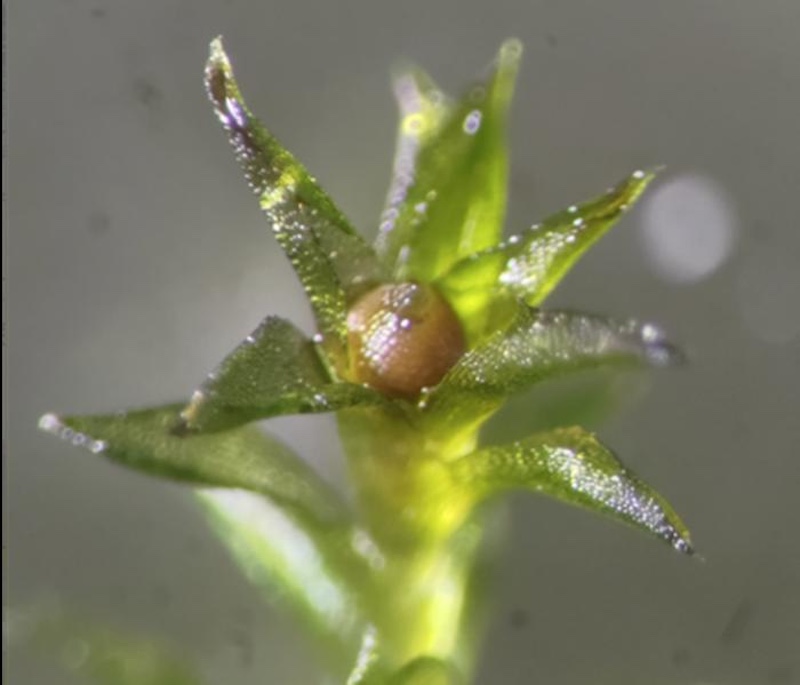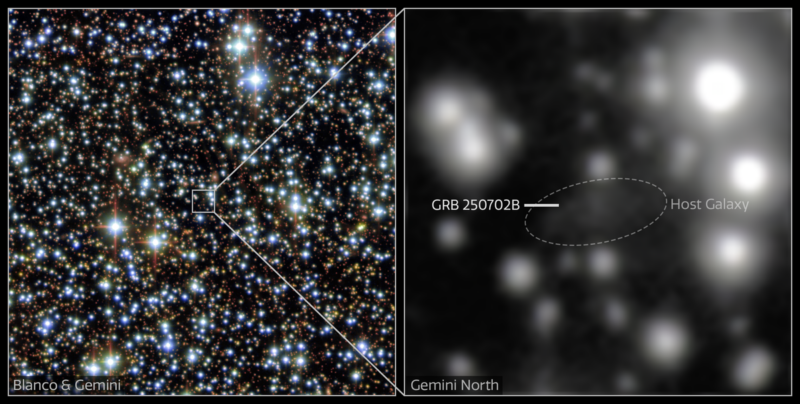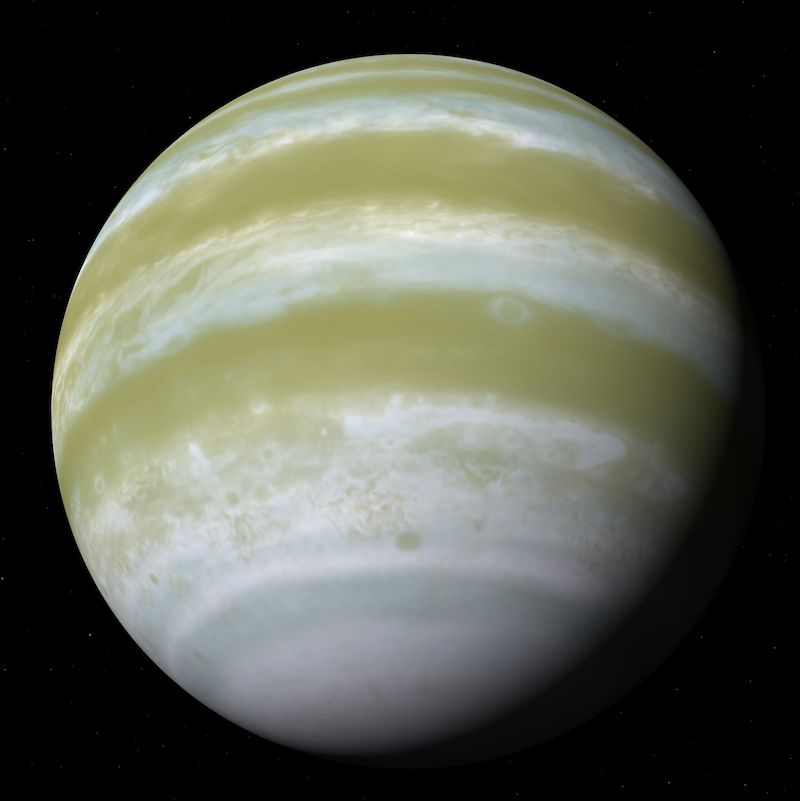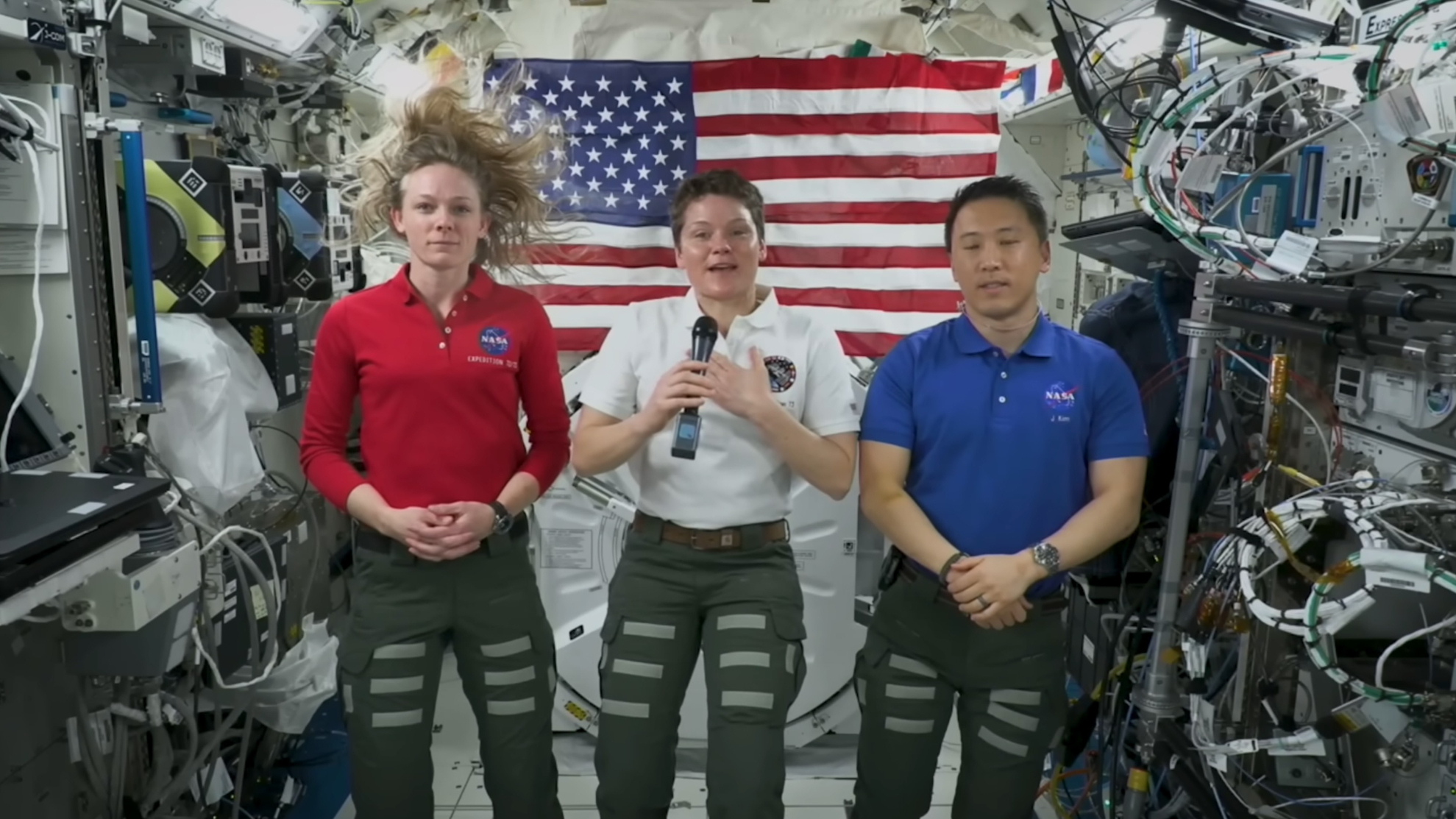Now Reading: Planet with a death wish triggers its own doom
-
01
Planet with a death wish triggers its own doom
Planet with a death wish triggers its own doom
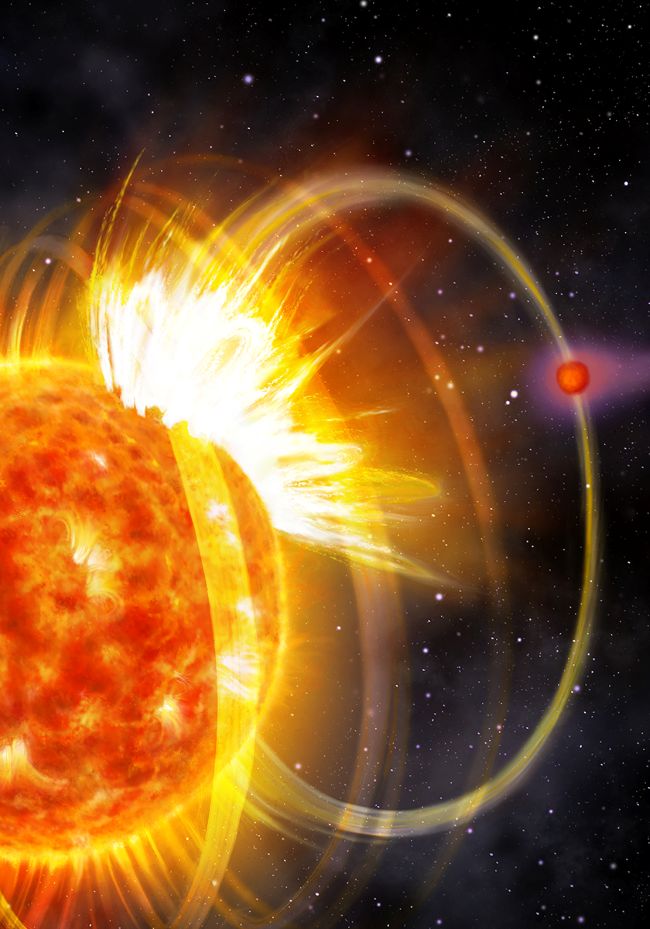

- Astronomers using the European Space Agency’s Cheops mission have found an exoplanet that seems to be triggering flares of radiation from its star.
- These tremendous explosions are blasting away the planet’s wispy atmosphere, causing it to shrink every year.
- This is the first-ever evidence for a ‘planet with a death wish.’
ESA published this original story on June 2, 2025. Edits by EarthSky.
Planet with a death wish triggers its own doom
Astronomers have spotted an exoplanet that appears to be triggering flares on its star. The star, named HIP 67522, is slightly larger and cooler than our sun. But while the sun is middle-aged at 4.5 billion years, HIP 67522 is a fresh-faced 17 million years old. It bears two known planets. The closer one – HIP 67522 b – takes just seven days to whip around its host star.
Because of its youth and size, scientists suspected that star HIP 67522 would churn and spin with lots of energy. This churning and spinning would turn the star into a powerful magnet.
Our much-older sun has its own smaller and more peaceful magnetic field. From studying the sun, we already knew that flares of energy can burst from magnetic stars when ‘twisted’ magnetic field lines are suddenly released. This energy can take the form of anything from gentle radio waves to visible light to aggressive gamma rays.
Taking a closer look
Ever since the first exoplanet was discovered in the 1990s, astronomers have pondered whether some of them might be orbiting close enough to disturb their host stars’ magnetic fields. If so, they could be triggering flares.
A team led by Ekaterina Ilin at the Netherlands Institute for Radio Astronomy (ASTRON) figured that with our current space telescopes, it was time to investigate this question further. Ilin said:
We hadn’t seen any systems like HIP 67522 before; when the planet was found it was the youngest planet known to be orbiting its host star in less than 10 days.
The team was using the Transiting Exoplanet Survey Satellite (TESS) to do a broad sweep of stars that might be flaring because of an interaction with their planets. When TESS turned its eyes to HIP 67522, the team thought they could be on to something. To be sure, they called upon ESA’s sensitive CHaracterising ExOPlanet Satellite, Cheops.
Ilin said:
We quickly requested observing time with Cheops, which can target individual stars on demand, ultra precisely. With Cheops we saw more flares, taking the total count to 15, almost all coming in our direction as the planet transited in front of the star as seen from Earth.

A flaring star and a planet with a death wish
Because we are seeing the flares as the planet passes in front of the star, it is very likely that the planet is triggering them.
A flaring star is nothing new. Our own sun regularly releases bursts of energy, which we experience on Earth as space weather that causes the auroras and can damage technology. But we’ve only ever seen this energy exchange as a one-way street from star to planet.
Knowing that HIP 67522 b orbits extremely close to its host star, and assuming that the star’s magnetic field is strong, Ilin’s team deduced that the clingy HIP 67522 b sits close enough to exert its own magnetic influence on its host star.
They think the planet gathers energy as it orbits, then redirects that energy as waves along the star’s magnetic field lines, as if whipping a rope. When the wave meets the end of the magnetic field line at the star’s surface, it triggers a massive flare.
It’s the first time we see a planet influencing its host star, overturning our previous assumption that stars behave independently.
And not only is HIP 67522 b triggering flares, but it is also triggering them in its own direction. As a result, the planet experiences six times more radiation than it otherwise would.

Self-imposed doom
Unsurprisingly, being bombarded with so much high-energy radiation does not bode well for HIP 67522 b. The planet is similar in size to Jupiter but has the density of cotton candy, making it one of the wispiest exoplanets ever found.
Over time, the radiation is eroding away the planet’s feathery atmosphere, meaning it is losing mass much faster than expected. In the next 100 million years, it could go from an almost Jupiter-sized planet to a much smaller Neptune-sized planet. Ilin said:
The planet seems to be triggering particularly energetic flares. The waves it sends along the star’s magnetic field lines kick off flares at specific moments. But the energy of the flares is much higher than the energy of the waves. We think that the waves are setting off explosions that are waiting to happen.

More questions than answers
When astronomers found HIP 67522, it was the youngest-known planet orbiting so close to its host star. Since then, astronomers have spotted a couple of similar systems. And there are probably dozens more in the nearby universe. Ilin and her team are keen to take a closer look at these unique systems with TESS, Cheops and other exoplanet missions. She said:
I have a million questions because this is a completely new phenomenon, so the details are still not clear.
There are two things that I think are most important to do now. The first is to follow up in different wavelengths (Cheops covers visible to near-infrared wavelengths) to find out what kind of energy is being released in these flares. For example, ultraviolet and X-rays are especially bad news for the exoplanet.
The second is to find and study other similar star-planet systems. By moving from a single case to a group of 10–100 systems, theoretical astronomers will have something to work with.
Cheops and exoplanet hunter Plato
Maximilian Günther, Cheops project scientist at ESA, is excited to see the mission contributing to research in a way that he never thought possible:
Cheops was designed to characterize the sizes and atmospheres of exoplanets, not to look for flares. It’s really beautiful to see the mission contributing to this and other results that go so far beyond what it was envisioned to do.
Looking further ahead, ESA’s future exoplanet hunter Plato will also study sunlike stars like HIP 67522. Plato will be able to capture much smaller flares to really give us the detail that we need to better understand what is going on.
Bottom line: Astronomers using the European Space Agency’s Cheops mission have spotted a planet with a death wish. The exoplanet seems to be triggering flares of radiation from the star it orbits.
Source: Close-in planet induces flares on its host star
The post Planet with a death wish triggers its own doom first appeared on EarthSky.
Stay Informed With the Latest & Most Important News
-
 012024 in Review: Highlights from NASA in Silicon Valley
012024 in Review: Highlights from NASA in Silicon Valley -
 02Panasonic Leica Summilux DG 15mm f/1.7 ASPH review
02Panasonic Leica Summilux DG 15mm f/1.7 ASPH review -
 03From Polymerization-Enabled Folding and Assembly to Chemical Evolution: Key Processes for Emergence of Functional Polymers in the Origin of Life
03From Polymerization-Enabled Folding and Assembly to Chemical Evolution: Key Processes for Emergence of Functional Polymers in the Origin of Life -
 04How New NASA, India Earth Satellite NISAR Will See Earth
04How New NASA, India Earth Satellite NISAR Will See Earth -
 05And Thus Begins A New Year For Life On Earth
05And Thus Begins A New Year For Life On Earth -
 06Astronomy Activation Ambassadors: A New Era
06Astronomy Activation Ambassadors: A New Era -
07SpaceX launch surge helps set new global launch record in 2024












